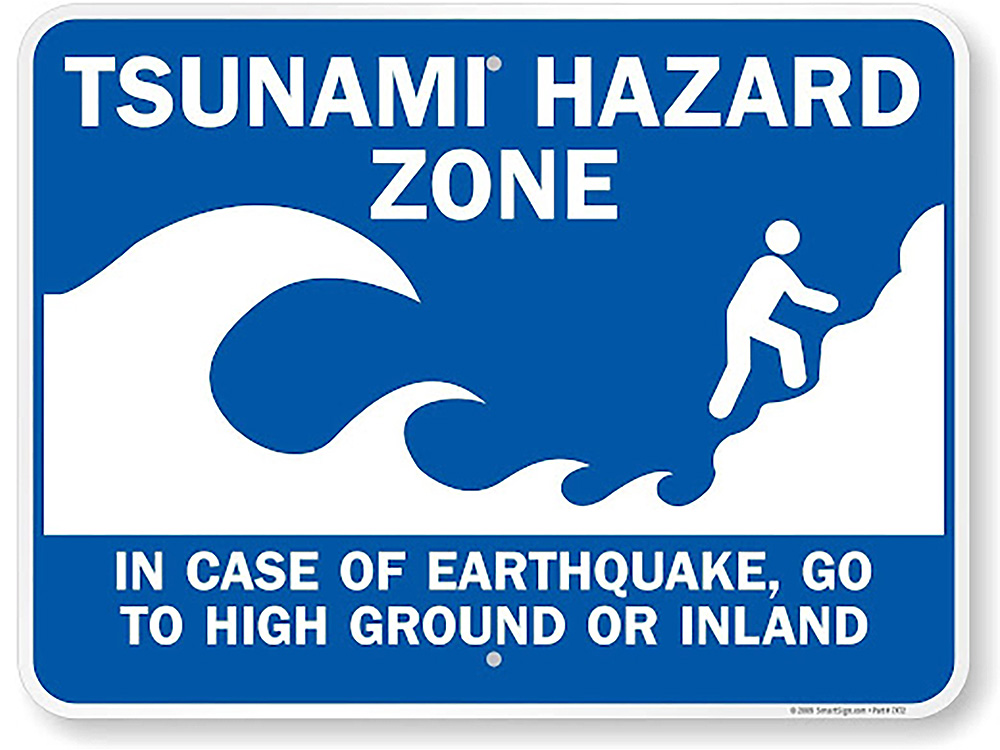How Does a Tsunami Affect Fishing?
 A tsunami can wreak havoc in coastal areas, but how do such episodes affect ocean fishing? The author offers his first-hand account.
Courtesy NOAA
A tsunami can wreak havoc in coastal areas, but how do such episodes affect ocean fishing? The author offers his first-hand account.
Courtesy NOAA
Saltwater anglers are a breed apart, some might say quirky. I can say that because I’m one of them. We are the kind people who, after lamenting the damage and human cost of a tsunami episode like the one that took place July 29-30, 2025, might be the only souls to ask, “I wonder how that will affect fishing?”
I have wondered that myself, but unlike many anglers, I have a solid idea of the answer, as I am one of a few who have fished ocean waters during a tsunami episode. Yep, that’s pretty quirky.
While I refrained from venturing out on my home waters off Southern California during this latest episode (I cancelled a trip because of it), I did fish through the 2011 tsunami episode, wrought by the 9.0 magnitude Fukushima earthquake off the coast of Japan.
Before I get to the fishing part, I have to admit, it was a dumb move. But I did not think an earthquake on the other side of the Pacific could have so much effect on the coast of California more than 24 hours later. I was wrong. If there is any kind of tsunami alert, stay off the water. You are likely to encounter phenomena with which you have no experience. Even a 1-foot tsunami can wreak havoc along the coast. Remember that a tsunami is not like a normal wind wave or swell that exists only at the water’s surface; with a tsunami, the entire water column from surface to seabed flows in and out. To stay posted on tsunami alerts for your area, visit the US Tsunami Warning Centers at tsunami.gov.
Back to my story. The lingering effects of the 2011 tsunami created unnerving conditions along the Southern California coast—things that I had never experienced. The waters—especially in bays and harbors—roiled, swirled, raced and switched directions at the drop of a hat. Powerful currents dragged buoys off station, snapped dock lines in marinas, and spun boats on anchor at dizzying speeds until anchors lifted and set vessels adrift.
Despite the spooky and unpredictable display of the Earth’s power over the ocean, I somehow navigated my 22-foot center console to deep water where the effects were less noticeable and set up to bottom fish. But things still weren’t right. Throughout the day, currents constantly shifted, sometimes racing at full speed, suddenly stopping, then shoving the boat in the opposite direction, generating massive whirlpools—all within a few minutes.
Read Next: Hurricane Preparedness Tips for Boat Owners
I was flummoxed and struggled to stay over any of my bottom fishing spots. That certainly affected fishing, or at least my ability to fish. But I think the fish—I was targeting calico bass, barred sand bass and rockfish—were struggling, too. The unstable conditions undoubtedly interrupted their normal feeding patterns that coincide with the rhythmic ebb and flow of the tides, and I imagined they hunkered down in the rocks and wrecks to wait out the chaotic tsunami surges.
Come to think of it, I probably should have hunkered down myself, not only for safety’s sake, but because I did not get even one bite that day. Yet, I went out a week later, and fishing was great.
So ultimately, if you’re wondering how a tsunami episode—even a minor one—affects fishing, take it from me. Fishing sucks. At least for a few days, and then it returns to normal.
The post How Does a Tsunami Affect Fishing? appeared first on Salt Water Sportsman.
- Home
- About Us
- Write For Us / Submit Content
- Advertising And Affiliates
- Feeds And Syndication
- Contact Us
- Login
- Privacy
All Rights Reserved. Copyright , Central Coast Communications, Inc.